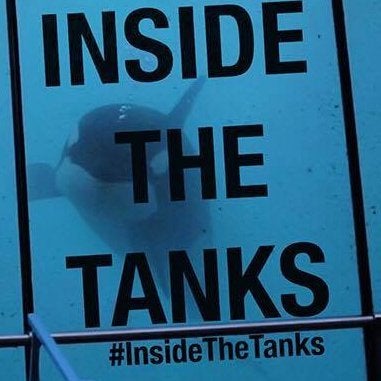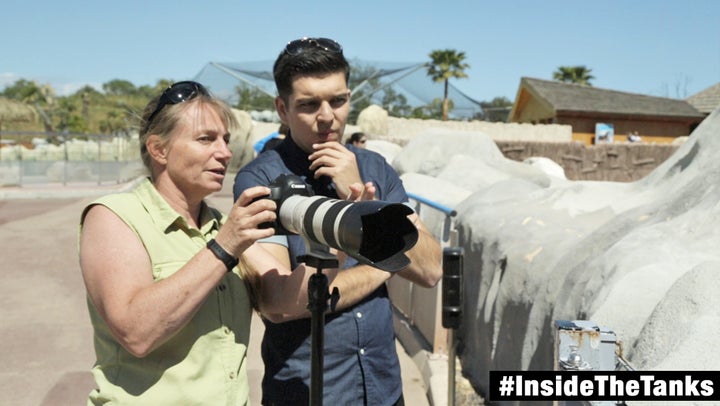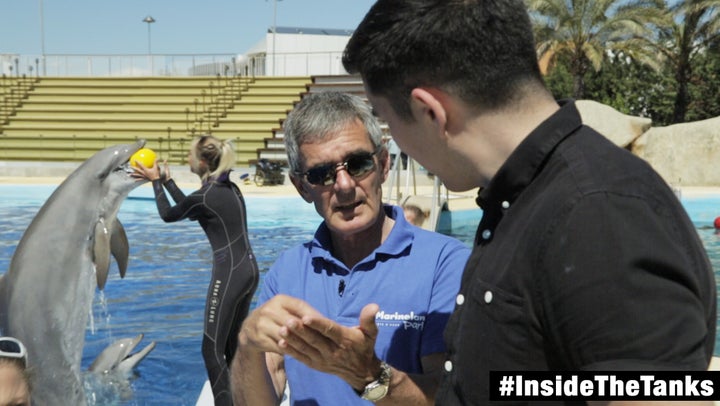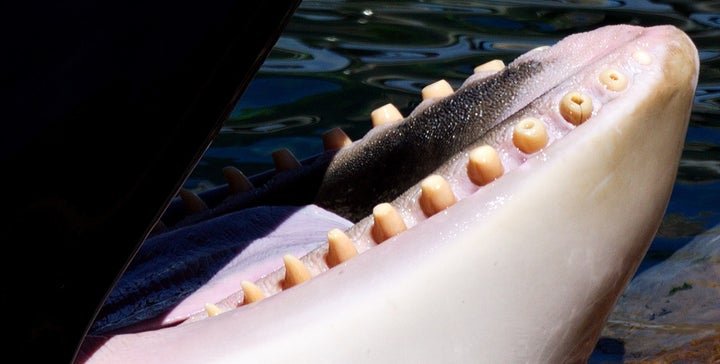
Inside the Tanks, a new film by 22 year-old British producer and presenter Jonny Meah, goes outside the lines of the typical discussion surrounding whales and dolphins in captivity. This new film delivers a unique, engaging and thought provoking behind the scenes glimpse of the killer whales and dolphins at Marineland Antibes in France.
The Pendulum Finds a New Center
Like a pendulum, society’s perception and acceptance of keeping killer whales and dolphins in captivity has swung from one extreme to another and today its true point of “rest” appears directed toward the end of captive breeding; the cessation of theatrical performances; and retirement to sea sanctuaries. There is also a growing consensus for the need for modernized standards and regulations to favor the welfare of the animals, not the financial welfare of the marine park industry.
“Opinion is like a pendulum and obeys the same law. If it goes past the centre of gravity on one side, it must go a like distance on the other; and it is only after a certain time that it finds the true point at which it can remain at rest.” -- Arthur Schopenhauer
True to his promise to present both sides of the issue, Meah meets with marine biologist and New Zealand orca expert, Dr. Ingrid Visser who is the founder and principal scientist of the Orca Research Trust. He also manages to get an extraordinary interview with Mr. Jon Kershaw, Zoological Director of Marineland Antibes in a rare instance of candid industry openness.
Dr. Visser lays out a simple list of “stereotypies” (abnormal, repetitive behaviors) that can be readily observed by anyone attending a marine park where whales and dolphins are held in barren, concrete tanks.

She also identifies several self-mutilating behaviors and physical wounds and skin abnormalities that simply are not observed in nature. Especially telling of the welfare of killer whales in captivity are their teeth which are worn down from chewing on the concrete tanks and in many cases, have been drilled to the pulp.

Mr. Kershaw had a different explanation of why the killer whale’s teeth wear down. He claimed that orca in the wild crush bone all day and they often break teeth. Dr. Visser says that portrayal is innaccurate. In a subsequent off-camera statement, Dr. Visser says that “there are no records in any of the orca studies done around the world, of orca crushing bones, they don't eat the bones, they strip the meat off, leaving the bones behind."
However, Mr. Kershaw does confirm that rather than filling the cavity like a dentist would do for a human patient, the veterinarians at Marineland Antibes leave the drilled-out tooth exposed and go through a process of flushing the teeth each day to try to prevent infection.

For this orca, held at Marineland Anitbes, many of its teeth are worn down, a number have been drilled and at least one of those is cracked. Dr. Visser claims the damage comes from the orca chewing on the concrete and results in the trainers having to drill them when the pulp is exposed. Mr. Kershaw agrees that this happens due to boredom.
Mr. Kershaw’s comments on the conditions of captivity and the state of the whales and dolphins at Marineland Antibes is refreshingly honest and straightforward. When Meah asks Mr. Kershaw a question about an unusual crease in the dolphin’s necks (as pointed out by Dr. Visser), he acknowledges he had never thought about it being due to the dolphins always looking up at the trainers and agrees that it is the dolphin’s posture which likely causes the crease and that such a posture is not something that would be seen in the wild.
At one point in the film, Mr. Kershaw appeared contemplative and solemn as he reflected on the death of two trainers who died while working with killer whales 2 months apart in 2009 and 2010. The trainers, Alexis Martinez and Dawn Brancheau were killed in separate “water work” incidents at Loro Parque in Tenerife, Spain and SeaWorld Orlando in the United States. Both trainer deaths were the subject of the film Blackfish which changed public perception of killer whales in captivity in ways that that the marine park industry is begrudgingly now acknowledging it will never be able to undo.
Dr. Visser has been tireless in her efforts to move the discussion to the “next level” promoting sea sanctuaries for the good of the whales and dolphins themselves and to ensure that they have both a “voice” and seat at the table. For his part, Mr. Kershaw should be commended as he seems genuinely accepting of the reality facing his industry and the need to change.
"Vive la France – Vive la Orca”
On 17 March 2016, SeaWorld rattled the international marine park industry when it made an announcement that it had entered into an agreement with The Humane Society of the United States to end the captive breeding of killer whales in its three marine parks in the United States (San Diego, Orlando and San Antonio) and the killer whales it keeps at Loro Parque in Tenerife, Spain.
Six months later, 13 September 2016, California Governor Jerry Brown signed the Orca Protection and Safety Act into law, banning the breeding of killer whales in captivity, as well as the circus-like shows that have them performing for crowds.
Then, on 3 May 2017, shortly after the completion of “Inside the Tanks”, the pendulum of public opinion and societal norms came to rest at a new center of balance as the French government passed a decree proclaiming that the reproduction of orcas and dolphins currently held in France is now banned. Thus, only the orca and dolphins currently held at Marineland Antibes can continue to be held, but they cannot be bred.
During the film, we see Meah going through his own transformative metamorphosis as he discovers that there is more common ground between “activist” and “keeper” than one might imagine. Inside the Tanks is a film deserving of admiration from whichever side of this conversation you wish to begin.
The international release of the film takes place at 7 pm (BST) on the 15th of June and can be viewed on the “Inside the Tanks” YouTube page here: bit.ly/insidethetanksdocumentary The film is free to watch and Meah encourages that it be shared across social media. In keeping with the global nature of this issue, in addition to the English language version (with subtitles for hearing impaired), versions with subtitles in French, German and Spanish are also being provided.
#InsideTheTanks, #Blackfish, #KillerWhales, #Orca, #SeaWorld
(Author’s note - Matthew Spiegl serves on the Board of the Free Morgan Foundation with Dr. Visser.)
